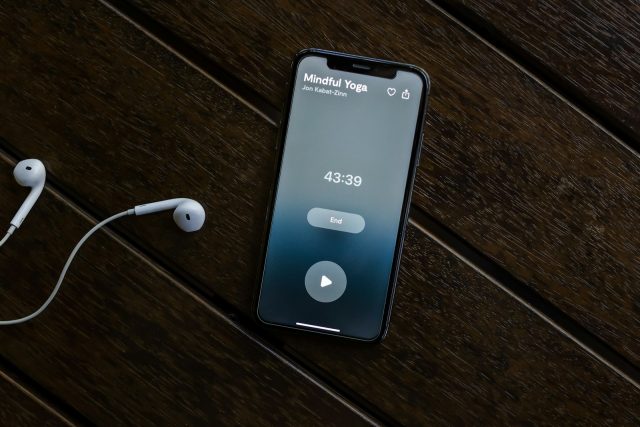
The Most Loved Apps: What Their UX Gets Right
Among calorie-tracking apps, certain names repeatedly come up in reviews praising their design and usability. One example is Calory. Users often compliment its “clean, visually appealing interface” and minimal distractions.
Another example is MyFitnessPal: one user on Reddit wrote, “MyFitnessPal UI was my favorite… fastest to categorize, input meals, search ingredients …”
Cronometer is also frequently praised. Its interface feels “fun, interactive,” though some reviewers mention its layouts can overwhelm new users.
For product designers or teams curious why some apps feel smooth and others feel heavy, it’s useful to learn from PageFlows. This resource gathers real user flows and annotated screenshots, showing how top-ranked apps guide users through steps like sign-up, meal logging, and daily progress tracking. Seeing these patterns in context can explain why certain apps earn more positive UX reviews than others.
Here’s a table summarizing strengths in UX noted in reviews:
| App Name | UX Strengths Highlighted by Users | Common UX Critique (if any) |
| Calory | Minimal, clean design, easy input, uncluttered screens | Limited deep features for advanced users |
| MyFitnessPal | Fast input, large food database, good navigation | Some items’ serving sizes are hard to adjust |
| Cronometer | Detailed reporting, interactive feel | Interface can look dense; pop-ups and ads annoy some |
From these examples, a few UX traits appear in positive reviews over and over:
- Simplicity in layout
- Fast and predictable interaction (few surprises)
- Clean visual hierarchy
- Minimal friction in core actions (logging, editing)
Apps that do these well tend to have happier users. Negative feedback often centers on apps that hide key features, complicate navigation, or overload screens with data.
When UX Fails: Apps Criticized for Bad Interface
Not all calorie apps win praise. Some are criticized harshly for their interface, which affects their popularity. A good example is CalAI, an AI-driven calorie app. One user wrote:
“CalAI is just objectively a bad app … the UX is bad … charts worse than nothing … lacking basic functionality.”
Another review says the app claims “UI is very nice, and food pictures look good,” but faults it for undercounting calories and unreliable estimates, suggesting that design can’t fix fundamental accuracy.
Then there’s Fooducate. In App Store comments, one user wrote:
“The user experience on this app is very clunky, time consuming, and not intuitive.”
It shows that even if a feature set is rich, a poor interface can sink it. When users struggle to find what they need, they abandon the app.
A list of common UX complaints in poorly received calorie apps:
- Confusing navigation or buried features
- Overcrowded screens and information overload
- Inconsistent design patterns
- Poor response times or lag
- Difficulty adjusting or entering custom serving sizes
In many user discussions, the same apps get praised for features but flagged for being harder to use than they should be. The lesson: strong features don’t outweigh bad UX.
The Design Patterns That Help (and Hurt) Engagement
Good interface design in calorie apps does more than look pretty. It nudges users to interact, keeps them returning, and reduces mistakes. From reviewing case studies and user feedback, a few patterns seem critical:
- Progressive disclosure: show only what’s needed now; hide advanced options until necessary.
- Consistent navigation: keep key actions in predictable places.
- Feedback and micro-interaction: animations, confirmation messages, simple transitions help users feel in control.
- Clean typography and white space: clarity over clutter.
- Seamless input flows: barcode scanning, food search, smart suggestions reduce typing.
These design patterns reduce friction. When users feel smoothness, they are more likely to keep logging meals and exploring features. Interface becomes invisible in the best apps.
UX + Trust = Longevity, Not Just Initial Downloads
An app might get many downloads, but retention depends on what users feel while using it. If the first few sessions feel confusing or slow, many users drop off. That is why UX is critical for long-term popularity.
One insight from user review research in diet-tracking apps: users repeatedly praise apps that let them track food easily, use image scanners, and navigate intuitively.
That tells us that performance and convenience are not optional, they are expected.
So the formula looks like this:
Good UX + reliable core features + trust in data = real success
Even apps with fewer features can grow if their UX is reliable and pleasant. Conversely, powerful apps with poor UX often struggle to maintain users.
What Every Designer Should Remember
When creating or improving a calorie-tracking app, the interface should empower the user. Think of it as a companion, not a chore. Keep these in mind:
- Test with real users, not just designers
- Observe where users hesitate or make mistakes
- Iterate based on behavior data, not opinions
- Prioritize clarity for core tasks: logging food, reviewing totals
- Avoid overwhelming users with all features at once
Even incremental improvements can shift user sentiment. Sometimes fixing one confusing screen or improving one button’s placement raises delight and retention noticeably.
A Different Ending
We often speak of trends passing. But good design isn’t a trend. In the world of calorie apps, interface design doesn’t just shape popularity, it sustains it. The apps whose names come up positively are rarely those with fancy gimmicks. They’re the ones that feel easy, consistent, and reliable.
If you build or pick an app, don’t judge it by how many features it has. Judge it by how it feels in your hand. Because when design works, it becomes invisible and then it becomes essential.










